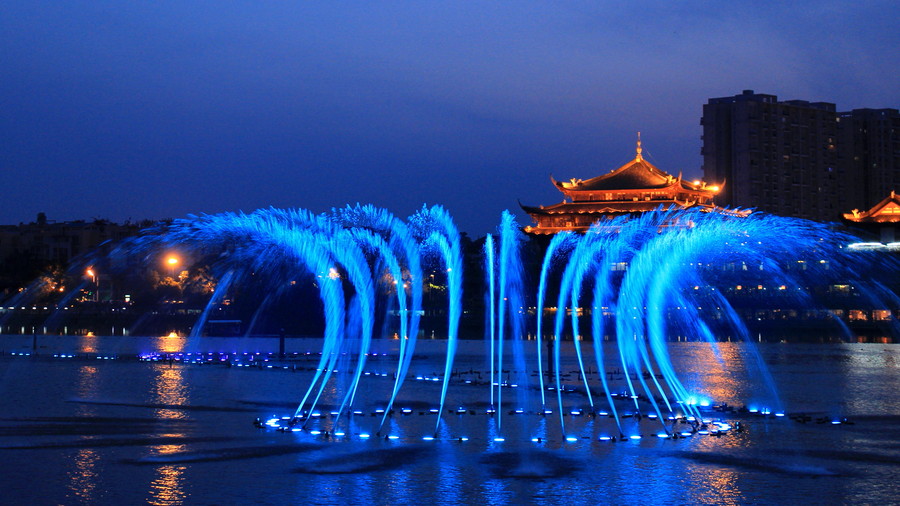The fountain company tells you what you need to pay attention to when arranging a music fountain
Publish Time:2020/06/03 NEWS Number of views:1587
The arrangement of the music fountain is like choreographing a dance. The director needs to consider the posture of the dancer to express the emotion of the music. And the arrangement of the music fountain’s repertoire needs to consider what kind of water type change to express the emotion of the music, and also to take into account the unique beauty of the shape change of the fountain itself. There are three main points to note when arranging musical fountains.

1. Action
The fountain is a dance of water, and the artistic effect of a musical fountain is always presented in the movement and change of the fountain. The movements of musical fountains are mainly: static, rotation, impact, swing, throwing, running and changes in fountain types.
The intensity of the same action is strong, the speed is fast, and the magnitude is not the same. In the same job, due to changes in rhythm, or changes in movement speed, increase or decrease in strength, increase or decrease in amplitude can reflect different effects and convey different emotions. A musical fountain is where the movement of the fountain resonates with the music.
2. Rhythm
The link between fountain and music is rhythm, and the rhythm of the fountain action in the musical fountain performance should be consistent with the rhythm of music. Rhythm is the basic element of music, and also an important part of the formal beauty required in the art of musical fountains. In music, rhythm is the basic means of expression. It is a regular combination of length, strength, weight, and weight of sound. It is also the main factor of the structure of the music, which makes the music reflect the fluctuation of emotion.
In a music fountain, rhythm is the basic constituent element and means of expression, that is, the strength of the water column movement, the speed, and the magnitude of the amplitude energy. The rhythm of the movement in a musical fountain is often based on the rhythm of the music melody. The continuation, repetition and change of the movement of the fountain are accompanied by the rhythm, so that the fountain and the musical emotion match, and the auditory rhythm of the music is visualized The presentation allows the music to be seen, and at the same time, the music also strengthens the rhythm of the fountain and embodies the rhythmic beauty of the fountain action.
3. Composition
Music is the art of hearing, and the music fountain is the art of coexistence of hearing and vision. It transforms the purely emotional time changes of music into visual spatial changes. In time, water is a point, line, surface and body. The combination of patterns and changes in lighting colors create a musical mood or mood. If rhythm is the time factor of a musical fountain, then the water type, color and movement form of the fountain are the spatial factors of the musical fountain, which is called the composition of the fountain here.
The movement and stillness of the water in the fountain show, the light and dark of the light, the density of light and light, the change of the virtual and the real of the movement, and the visual effects presented to the viewer not only express the specific thoughts and feelings of the music, but also Create a variety of beautiful fountain imagination spaces.
From one point to another point, from a point to a line, and then to a surface, the water-type movements formed by this are colorful. The track arranger of the music fountain must not only consider the rhythm of music, The melody must also take into account the movement direction, route, and shape of the fountain itself, so that the fountain is more three-dimensional and more layered.
- Seven tips for retaining the beauty of the...
- 10 Stunning Wedding Venue Musical Fountain...
- How to choose a fountain company
- Invisible protection project of square fou...
- How to improve the competitiveness of foun...
- Master these and make your fountain design...
- Various types of fountain installation to ...
- How to avoid the noise when the water pump...













